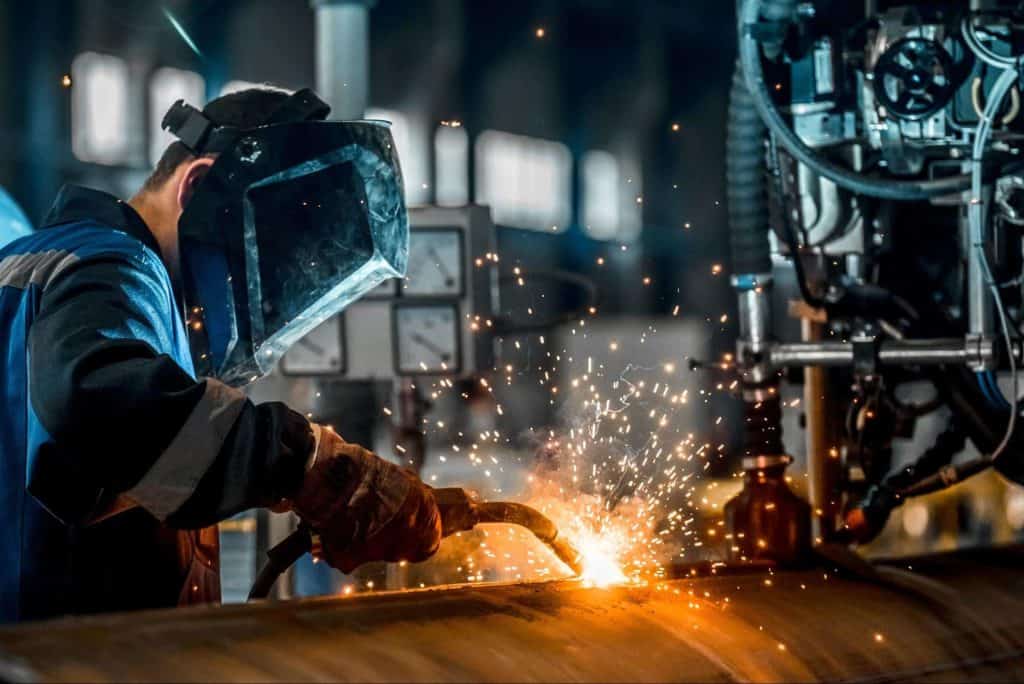Qualified Houston Welding Inspection Professionals for High-Quality Assessments
Checking Out the Basics of Welding Assessment: A Comprehensive Exam of Procedures, Tools, and the Significance of High Quality Control in Welding Industries
Welding evaluation functions as a keystone in the upkeep of safety and security and architectural honesty across various sectors. By checking out the important procedures and tools utilized in these inspections, one can value the complex balance between high quality control and conformity with established criteria from companies such as AWS and ANSI. The methods utilized, including aesthetic and non-destructive screening strategies, are crucial in detecting flaws that can endanger the longevity of bonded frameworks. Comprehending the ramifications of these practices elevates vital concerns regarding their effectiveness and the future instructions of quality control in welding.
Relevance of Welding Examination
Welding evaluation plays an essential role in guaranteeing the integrity and safety and security of bonded structures. It functions as a methodical method to reviewing weld high quality, determining potential defects, and making certain conformity with recognized standards and specifications. The importance of welding evaluation expands beyond simple adherence to policies; it is pivotal in securing human lives and shielding investments in facilities.
Faulty welds can lead to catastrophic failures, resulting in considerable economic losses, injury, or loss of life. As a result, extensive assessment procedures are important to discover concerns such as inadequate infiltration, porosity, or cracks before they escalate right into critical failings. In addition, reliable welding examination contributes to the general performance and durability of frameworks, making sure that they can stand up to the conditions for which they were designed.
Additionally, the execution of welding evaluation cultivates a society of quality and liability within the welding industry. By prioritizing examination, organizations show their commitment to quality, thereby boosting their credibility and competitiveness in the marketplace. Eventually, welding inspection is not merely a step-by-step action yet a fundamental part of design integrity and safety and security assurance, vital for the effective execution of welding tasks throughout various markets.
Key Assessment Processes
A comprehensive method to welding inspection involves a number of vital processes that are important for ensuring weld quality and architectural integrity. The first critical process is visual inspection, which permits assessors to identify surface area issues such as fractures, porosity, and improper bead look. This method works as an initial assessment to ensure that the weld satisfies defined requirements.

Additionally, damaging screening may be performed on sample welds to analyze their mechanical residential or commercial properties and efficiency under anxiety. This process includes tensile, effect, and tiredness testing to verify that the weld can hold up against functional conditions.
Finally, documents and reporting are essential components of the assessment procedure. Keeping exact documents of evaluations, observations, and test results helps make certain compliance with sector standards and assists in regular renovation in welding techniques. Collectively, these vital procedures create the foundation of effective welding examination and quality control.
Devices for Weld Evaluation
Various devices are crucial for efficient weld assessment, each made to examine different facets of weld quality and performance. Amongst the most commonly used are visual inspection devices, consisting of magnifying glasses and borescopes, which allow examiners to recognize surface problems such as fractures, porosity, and incorrect blend.
In addition, ultrasonic testing (UT) equipment is critical for identifying internal flaws. This device employs high-frequency audio waves to reveal suspensions within the weld, ensuring the honesty of the product. Radiographic screening (RT) tools, which make use of X-rays or gamma rays, in a similar way provide insight right into the internal structure of welds, enabling the identification of voids or inclusions.
For accurate measurements, calipers and assesses play a significant role in identifying weld measurements More Help and guaranteeing adherence to defined resistances. Hardness testers examine the mechanical homes of the weld, guaranteeing it satisfies performance requirements.

Methods for Analyzing Quality
Just how can the top quality of welds be reliably assessed? A selection of techniques are employed to examine weld stability and ensure adherence to defined requirements.
Ultrasonic testing (UT) is an additional prominent technique that uses high-frequency acoustic waves to find internal imperfections within the weld. Houston Welding Inspection. This technique provides a Learn More thorough view of the weld's stability without compromising its architectural honesty. Additionally, radiographic screening (RT) employs X-rays or gamma rays to expose inner problems, offering comprehensive insights right into weld high quality
Magnetic bit screening (MT) is effective for discovering surface and near-surface discontinuities in ferromagnetic products, making use of magnetic areas and tinted fragments to highlight flaws. Last but not least, color penetrant screening (PT) can be utilized to discover surface-breaking problems by applying a color that leaks into fractures and is ultimately disclosed.
Compliance With Market Requirements
Compliance with industry requirements is crucial for guaranteeing the quality and security of welded frameworks. These requirements, established by companies such as the American Welding Society (AWS) and the American National Specification Institute (ANSI), supply guidelines that control the welding procedure, products, and assessment methods. Sticking to these standards not just makes certain the structural integrity of welds however additionally mitigates risks connected with failings that can bring about tragic consequences.

Welding examiners are tasked with verifying conformity with these criteria throughout the welding procedure (Houston Welding Inspection). This entails analyzing welding treatments, monitoring welder credentials, and performing detailed evaluations of the end product. Non-compliance can cause significant monetary consequences, project delays, and damage to a business's online reputation
Normal training and updates on requirements are crucial to maintain employees informed and skilled, making certain that all facets of welding procedures fulfill or go beyond regulatory needs. Ultimately, commitment to sector standards serves as a structure for excellence in the welding industry, promoting safety and reliability browse this site in bonded frameworks.

Verdict
In conclusion, welding examination functions as a critical component in maintaining the safety and security and integrity of bonded frameworks. Through the implementation of essential assessment processes and the usage of innovative tools and techniques, prospective issues can be identified and resolved successfully. Adherence to market standards makes certain compliance and promotes a culture of top quality within the welding market. Inevitably, rigorous evaluation practices not only protect human lives but also enhance the sturdiness and performance of bonded buildings.
Moreover, the application of welding inspection cultivates a society of top quality and accountability within the welding sector. Inevitably, welding evaluation is not merely a step-by-step step but a basic component of engineering stability and safety and security guarantee, vital for the effective execution of welding tasks across numerous fields.
A detailed approach to welding evaluation includes several key processes that are important for guaranteeing weld quality and structural stability. These requirements, developed by organizations such as the American Welding Culture (AWS) and the American National Specification Institute (ANSI), offer guidelines that control the welding process, products, and assessment methods.Welding assessors are entrusted with confirming compliance with these requirements throughout the welding procedure.